Why you can trust Credit Card
More Info
These card offers from our partners carry some of the best rewards value and perks out there, with each issuer offering a variety of programs to suit your unique spending habits. Whether you need a flat-rate card to cover any purchase, a bonus or rotating category card for specialized spending or even a choice category card for ultimate flexibility, we’ll help you find the credit card that helps you reach your rewards goals.
On this page
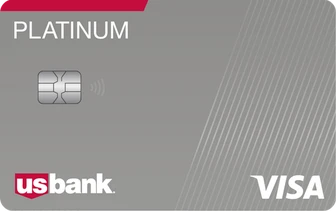
BEST FOR CUSTOMIZABLE REWARDS
U.S. Bank Cash+® Visa Signature® Card

Reward rate
5
5% cash back on your first $2,000 in eligible net purchases each quarter on the combined two categories you choose.
3
5% cash back on prepaid air, hotel and car reservations booked directly in the Rewards Travel Center.
-1
1% cash back on all other eligible purchases.
1
1% cash back on all other eligible purchases.
Intro offer
$200 bonus
Annual fee
$0
Regular APR
16.74% - 26.74% (Variable)
Recommended credit
Good to Excellent (670 - 850)
Pros
- Multiple rotating and fixed bonus categories, which can make it easier to earn rewards quickly
- The $200 sign-up bonus (after spending $1,000 within the first 120 days of account opening) increases the card’s first-year value
Cons
- The $2,000 combined spending cap each quarter for your chosen 5% categories limits your ability to rake in rewards
- Having to track and enroll in rotating categories can be a hassle for some
- New! $200 bonus after spending $1,000 in eligible purchases within the first 120 days of account opening.
- 5% cash back on your first $2,000 in combined eligible purchases each quarter on two categories you choose
- 5% cash back on prepaid air, hotel and car reservations booked directly in the Rewards Travel Center
- 2% cash back on one everyday category, like Gas Stations/EV Charging Stations, Grocery Stores or Restaurants
- 1% cash back on all other eligible purchases
- 0% Intro APR on purchases and balance transfers for the first 15 billing cycles. After that, a variable APR currently 16.74% – 26.74%
- No Annual Fee
- Pay over time by splitting eligible purchases of $100+ into equal monthly payments with U.S. Bank ExtendPay™ Plan.
- Terms and conditions apply.
ADDITIONAL FEATURES
Purchase intro APR
0% Intro APR on purchases for the first 15 billing cycles.
Balance transfer intro APR
0% Intro APR on balance transfers for the first 15 billing cycles.

BEST FOR PERSONAL LOAN ALTERNATIVE
Upgrade Cash Rewards Elite Visa®

Reward rate
2.2
Earn 2.2% unlimited cash back on card purchases every time you make a payment
Intro offer
$200
Annual fee
$0
Regular APR
8.99% - 29.99% (Variable)
Recommended credit
Good to Excellent (670 - 850)
Pros
- You won’t need to use your reward earnings to offset any maintenance fees.
- You’ll earn a bonus after you open a Rewards Checking account and make three purchases with the card in your first 60 days.
Cons
- The high end APR range is well above average. That could prove costly if you don’t have the credit needed to qualify for the lower range and you end up carrying a balance.
- You won’t get a break on interest if you carry a balance since there are no intro APR offers on purchases or balance transfers.
- $200 bonus on your Upgrade Card after opening a Rewards Checking account and making 3 debit card transactions within 60 days.*
- New Feature: Pay your balance in full early each month and avoid interest with EarlyPay.
- Earn 2.2% unlimited cash back on card purchases every time you make a payment
- See if you qualify in seconds with no impact to your credit score
- No Fees – $0 annual fees, $0 activation fees, $0 maintenance fees
- Combine the flexibility of a card with the low cost and predictability of a loan
- Access to a virtual card, so you can start earning while you wait for your card to arrive in the mail.
- Contactless payments with Apple Pay® and Google Pay™
- Mobile app to access your account anytime, anywhere
- Enjoy peace of mind with $0 Fraud liability
- *To qualify for the $200 welcome bonus, you must open and fund a new Upgrade Rewards Checking Account and make 3 debit card transactions within 60 days of your Upgrade Card account opening. The bonus credit will be posted to your Upgrade Card as a rewards credit within 1-2 billing periods following the third debit transaction on your Rewards Checking account. Your Upgrade Card must be in good standing to receive the bonus.
ADDITIONAL FEATURES
Purchase intro APR
N/A
Balance transfer intro APR
N/A
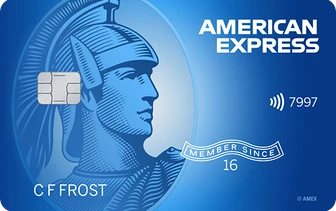
BEST FOR GAS
Blue Cash Everyday® Card from American Express

Reward rate
3
3% Cash Back at U.S. supermarkets on up to $6,000 per year in purchases, then 1%.
1
New! 3% Cash Back on U.S. online retail purchases, on up to $6,000 per year, then 1%.
-1
1% Cash Back on other purchases.
1
1% Cash Back on other purchases.
Intro offer
$200
Annual fee
$0
Regular APR
16.24%-27.24% Variable
Recommended credit
Good to Excellent (670 - 850)
Pros
- It carries one of the best combined cash back rates available at no annual fee at U.S. gas stations and U.S. supermarkets. Those two categories make up a big chunk of the average person’s budget.
- You can earn $7 back per month on The Disney Bundle streaming package, which includes Disney+, Hulu, and ESPN+ (each month you spend $13.99 or more on an eligible subscription, terms apply). To earn that much back in a month via the card’s 3 percent categories, you’d typically need to spend over $230.
Cons
- You’ll only earn 3 percent cash back on your first $6,000 in annual spending in each of the card’s bonus categories (then 1 percent). While that’s a high limit, it could hold you back if you’re sharing an account across multiple households.
- The card carries a 2.7 percent foreign transaction fee, so it’s not a good option if you’re looking for a single rewards card you can use at home and abroad.
- Earn a $200 statement credit after you spend $2,000 in purchases on your new Card within the first 6 months.
- No Annual Fee.
- Balance Transfer is back! Enjoy 0% intro APR on purchases and balance transfers for 15 months from the date of account opening. After that, 16.24% to 27.24% variable APR.
- 3% Cash Back at U.S. supermarkets on up to $6,000 per year in purchases, then 1%.
- New! 3% Cash Back on U.S. online retail purchases, on up to $6,000 per year, then 1%.
- 3% Cash Back at U.S. gas stations, on up to $6,000 per year, then 1%.
- Get $7 back each month after using your Blue Cash Everyday® Card to spend $13.99 or more each month on an eligible subscription to The Disney Bundle, which includes Disney+, Hulu, and ESPN+. Enrollment required.
- Terms Apply.
ADDITIONAL FEATURES
Purchase intro APR
0% on purchases for 15 months
Balance transfer intro APR
0% on balance transfers for 15 months
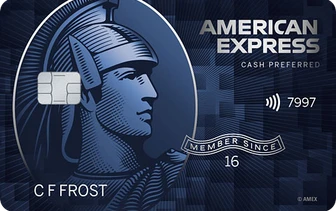
BEST FOR GROCERIES
Blue Cash Preferred® Card from American Express

Reward rate
6
6% Cash Back at U.S. supermarkets on up to $6,000 per year in purchases (then 1%).
1
6% Cash Back on select U.S. streaming subscriptions.
3
3% Cash Back at U.S. gas stations
0
3% Cash Back at U.S. gas stations
1
1% Cash Back on other purchases
Intro offer
$350
Annual fee
$95
Regular APR
16.24%-26.24% Variable
Recommended credit
Good to Excellent (670 - 850)
Pros
- The base reward program is uber-lucrative, making this card a good choice for people looking for long-term value.
- You don’t have to keep track of rotating spending categories or enrollment deadlines.
Cons
- There is no intro APR offer on balance transfers.
- You won’t earn the extra rewards for grocery shopping at major superstores and wholesale clubs, as those don’t count as U.S. supermarkets.
- Earn a $350 statement credit after you spend $3,000 in purchases on your new Card within the first 6 months.
- Buy Now, Pay Later: Enjoy $0 intro plan fees when you use Plan It® to split up large purchases into monthly installments. Pay $0 plan fees on plans created during the first 12 months after account opening. Plans created after that will have a fixed monthly plan fee up to 1.33% of each purchase amount moved into a plan based on the plan duration, the APR that would otherwise apply to the purchase, and other factors.
- Low intro APR: 0% intro APR for 12 months on purchases from the date of account opening, then a variable rate, 16.24% to 26.24%.
- 6% Cash Back at U.S. supermarkets on up to $6,000 per year in purchases (then 1%).
- 6% Cash Back on select U.S. streaming subscriptions.
- 3% Cash Back at U.S. gas stations and on transit (including taxis/rideshare, parking, tolls, trains, buses and more).
- 1% Cash Back on other purchases.
- Cash Back is received in the form of Reward Dollars that can be redeemed as a statement credit.
- $95 Annual Fee.
- Terms Apply.
ADDITIONAL FEATURES
Purchase intro APR
0% on purchases for 12 months
Balance transfer intro APR
N/A
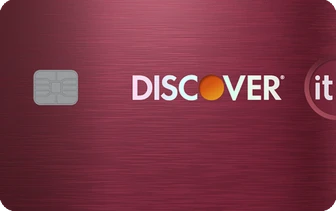
BEST FOR ROTATING CASH BACK CATEGORIES
Discover it® Cash Back

Reward rate
5
Earn 5% cash back on everyday purchases at different places each quarter like Amazon.com, grocery stores, restaurants, gas stations and when you pay using PayPal, up to the quarterly maximum when you activate.
1
Plus, earn unlimited 1% cash back on all other purchases – automatically.
Intro offer
Cashback Match™
Annual fee
$0
Regular APR
13.49% - 24.49% Variable
Recommended credit
Good to Excellent (670 - 850)
Pros
- Discover will match the cash back you earn at the end of the first year.
- There are a few cash back redemption options, including credit to your account and donations.
Cons
- You must enroll to take advantage of the bonus categories each quarter.
- There is a spending limit on your highest cash back category each quarter ($1,500 in combined purchases per quarter).
- Intro Offer: Unlimited Cashback Match – only from Discover. Discover will automatically match all the cash back you’ve earned at the end of your first year! There’s no minimum spending or maximum rewards. You could turn $150 cash back into $300.
- Earn 5% cash back on everyday purchases at different places each quarter like Amazon.com, grocery stores, restaurants, gas stations and when you pay using PayPal, up to the quarterly maximum when you activate. Plus, earn unlimited 1% cash back on all other purchases – automatically.
- New! Discover helps remove your personal information from select people-search websites. Activate by mobile app for free.
- Every $1 you earn in cash back is $1 you can redeem.
- New Intro APR: Get a 0% intro APR for 15 months on purchases. Then 13.49% to 24.49% Standard Variable Purchase APR applies, based on credit worthiness.
- No annual fee.
ADDITIONAL FEATURES
Purchase intro APR
0% for 15 months
Balance transfer intro APR
0% for 15 months
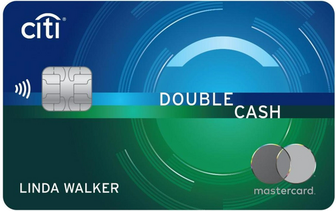
BEST FOR UP TO 2% CASH BACK
Citi® Double Cash Card

Reward rate
2
Earn 2% on every purchase with unlimited 1% cash back when you buy, plus an additional 1% as you pay for those purchases.
Intro offer
$200 Cash Back
Annual fee
$0
Regular APR
16.24% - 26.24% (Variable)
Recommended credit
Good to Excellent (670 - 850)
Pros
- You can convert your cash back earnings to Citi ThankYou points when paired with a card like the Citi Premier® Card, which can be redeemed for travel, gift cards and more.
- There are no spending category restrictions or rotating categories
Cons
- Your rewards can expire with this card if you don’t use it for a year.
- The sign-up bonus spending requirement is higher than you’ll find on many no-annual-fee cash back cards.
- Earn 2% on every purchase with unlimited 1% cash back when you buy, plus an additional 1% as you pay for those purchases.
- For a limited time, earn $200 cash back after spending $1,500 on purchases in the first 6 months of account opening.
- Balance Transfer Only Offer: 0% intro APR on Balance Transfers for 18 months. After that, the variable APR will be 16.24% – 26.24%, based on your creditworthiness.
- Balance Transfers do not earn cash back. Intro APR does not apply to purchases.
- If you transfer a balance, interest will be charged on your purchases unless you pay your entire balance (including balance transfers) by the due date each month.
- There is an intro balance transfer fee of 3% of each transfer (minimum $5) completed within the first 4 months of account opening. After that, your fee will be 5% of each transfer (minimum $5).
ADDITIONAL FEATURES
Purchase intro APR
N/A
Balance transfer intro APR
0% intro for 18 months on Balance Transfers
A closer look at our top-rated rewards credit cards
Chase Sapphire Preferred Card: Best starter travel card
- What we love about the Chase Sapphire Preferred Card: Its incredible travel protections and generous rewards rates for both travel and day-to-day purchases seem to clock in above what the Sapphire Preferred’s low annual fee suggests. Plus, its generous sign-up bonus, point value boost toward Chase travel and stellar transfer partners make this card a stand-out option for travelers looking for a low-cost rewards card with great short- and long-term value — especially if you plan to pool your rewards with other Chase rewards cards in the future.
- Who this card is good for: Occasional-to-frequent travelers who want great value without the annual fee of a luxury travel card — especially if they plan on getting more Chase rewards cards in the future.
- Alternatives: The Citi Premier Card could be a worthwhile second choice if you’d rather your bonus categories are weighted toward additional everyday purchases (like gas), but a flat-rate travel card like the Capital One Venture makes it easy to earn boosted miles on purchases that typically fall outside of travel-related bonus categories
Wells Fargo Active Cash Card: Best for flat-rate cash rewards
- What we love about the Wells Fargo Active Cash Card: It’s perhaps the first time we’ve seen unlimited 2 percent cash rewards on purchases without additional hoops to jump through to earn the full rewards rate. And unlike a number of other flat-rate cards, it comes with a number of well-rounded features like a solid intro APR, welcome offer and up to $600 cellphone protection per eligible claim (two claims per year, minus a $25 deductible, by paying your cellphone bill with your card).
- Who this card is good for: Cash rewards seekers who prefer a simple, valuable earning structure — especially for big spenders and those with purchases that fall outside typical bonus categories.
- Alternatives: The Citi® Double Cash Card may be a better option if you’re looking for a flat-rate card with an intro APR balance transfer offer. Meanwhile, the Bank of America® Unlimited Cash Rewards credit card (if you’re a Bank of America Preferred Rewards member) or Case Freedom Unlimited® (due to its additional 3 percent cash back categories) have the potential to be more valuable for some cardholders.
Capital One Venture Rewards Credit Card: Best for flat-rate travel rewards
- What we love about the Capital One Venture card: The flat-rate 2X miles on purchases allows you to earn travel miles without traveling, a great perk for anyone who travels infrequently or spends more on non-travel related expenses. Plus, its flexible redemption portal and ability to redeem rewards for statement credits toward travel purchases already made in the past 90 days go the extra mile toward a streamlined rewards experience many travel cards can’t boast.
- Who this card is good for: Simplicity-seekers and domestic spenders who want to earn a respectable travel mile rewards rate on purchases that aren’t travel-related. The Venture card is one of the best options if you don’t want to deal with bonus categories and the redemption complexities many travel cards pose.
- Alternatives: If you don’t want to pay an annual fee and don’t mind the limited features, the Capital One VentureOne card may be a better deal. But if you’re looking for luxury perks like lounge access and annual credits, the Capital One’s Venture X card’s bonus features can help offset its annual fee easier than you can with the Venture (despite being $395). However, the Chase Sapphire Preferred may offer better rewards value and travel perks than the Venture if you want to stick with a $95 annual fee.
Citi Premier Card: Best for occasional travel
- What we love about the Citi Premier Card: It’s a handy catch-all travel card for travelers that spend a bit more time at home and on the road than abroad. Not only does its valuable spread of bonus categories and hotel benefits more than make up for the $95 annual fee, but it also pairs incredibly well with other Citi rewards cards, which will appeal to rewards strategists who want to maximize their earning potential.
- Who this card is good for: Occasional travelers who can rake in more rewards from everyday expenses like food and gas may be the prime Citi Premier cardholders.
- Alternatives: The Chase Sapphire Preferred card’s stronger travel features or the Blue Cash Preferred card’s higher rewards rates may make them better choices for a rewards card with a $95 annual fee, especially if your expenses usually skew toward travel or everyday purchases.
Discover it Cash Back: Best for deal hunters
- What we love about the Discover it Cash Back card: The Discover it Cash Back dials back on bonus features to focus on market-low rates and fees, award-winning customer service and a valuable first-year cash back match welcome offer to supplement its rotating rewards. Plus, the card makes it a lot easier than other rotating category cards for deal hunters to map out the best time to make your purchases since Discover’s cash back calendar is announced the year before rather than a quarter ahead.
- Who this card is good for: People who like the excitement of changing bonus categories and can take advantage of its cycling categories for seasonal expenses.
- Alternatives: Cardholders looking to maximize their seasonal spending rewards may get more value from the Chase Freedom Flex℠
- if they don’t mind slightly higher rates and fees or shorter notice on upcoming categories. Although its quarterly categories are harder to anticipate, its year-round 3 percent dining and drugstore categories can help you earn more cash back to lean on if a quarterly category doesn’t align with your usual spending.
Blue Cash Preferred Card from American Express: Best for groceries
- What we love about the Blue Cash Preferred Card: This is perhaps the most rewarding card for groceries — especially if you want consistent, year-round cash back. Sure, you can find other cards that reward you for grocery purchases, but the elevated rates for other everyday expenses like transit, select U.S. streaming services and U.S. gas station purchases make it a well-rounded card for a variety of cardholders’ household budgets — especially considering it’s one of the rare premium cards to offer an intro purchase APR (0 percent for 12 months, then 15.49 percent to 25.49 percent, variable).
- Who this card is good for: Families and households with large grocery and gas station bills. Commuters may also maximize the Blue Cash Preferred thanks to its comprehensive transit category that includes parking, rideshares, tolls, and train tickets.
- Alternatives: This card doesn’t earn boosted rewards at superstores (like Target and Walmart) or wholesale clubs (like Costco or Sam’s Club). Depending on where you like to shop, a flat-rate card like the Wells Fargo Active Cash Card could provide better value. And if the annual fee is a deal-breaker, the Blue Cash Everyday® Card from American Express or the Bank of America® Customized Cash Rewards credit card may be a better fit for smaller budgets.
What is a rewards credit card?
Depending on the issuer, some of the best credit cards for rewards offer distinct rewards programs and have specific rules concerning how you can redeem your rewards. However, understanding the issuer’s credit card rewards program can help you take advantage of all the perks and benefits it offers.
What are the best ways to use reward cards in 2022?
As you navigate the post-pandemic world, your rewards strategy may need to shift with your spending habits to squeeze the most value out of your credit cards.
- With prices fluctuating on major everyday expenses like groceries, gas and dining, earning credit card rewards can help minimize inflation costs on these purchases. Although cash back, points and travel miles won’t offset the increasing costs entirely, they can at least help you save more than you would by paying with cash or debit.
- If you’re getting back into traveling, you may want to consider a travel credit card. But if you’re still apprehensive about traveling or plan to scale back your travel spending, a flexible card that lets you redeem rewards for more than just travel — including cash back at the same rewards value — may be a great pick. This includes cards like the Bank of America Premium Rewards card and the Discover it® Miles.
- A card that rewards gas purchases or transit may be a good idea if you’re back to commuting to work or school. If you’re working remotely or on a hybrid schedule, you may be better off with a flat-rate card that covers a wide variety of everyday expenses. A customizable bonus category card like the Bank of America® Customized Cash Rewards credit card could also be a great fit, as these offer extra versatility by letting you shift your bonus categories to fit your monthly spending habits.
- If you’ve gotten tired of cooking at home, a restaurant rewards card may be more valuable than a credit card that will help you earn rewards on groceries. The Capital One SavorOne strikes a great balance between both categories, but a travel card that rewards dining like the Chase Sapphire Preferred or the Amex Gold may be even more lucrative if you’re eager to pack your bags and travel this summer.
Creditcard's Insight
Nearly 1 in 3 rewards credit cardholders didn’t redeem any rewards in 2020, a Bankrate survey found. While 69 percent of cardholders did redeem cash back, points or miles, 55 percent of those did so for less than $300 in value.
Types of rewards credit cards
Cash back cards
With a cash back card, you’ll be rewarded with a percentage of your purchases paid back to you. Cash back works by applying that percentage as a statement credit toward your account, but some cards can directly deposit the cash back into your checking or savings account. Here are the three main types of cash back.
- Flat-rate cash back cards offer a fixed percent back — usually between 1 and 3 percent — on all purchases. For people who prefer to set and forget, a flat-rate credit card is an excellent, no-fuss option. The Capital One Quicksilver card, for example, earns 1.5 percent cash back on all purchases.
- Tiered cash back cards reward specific types of purchases at a higher rate. These cards then reward other purchase categories at varying rates until it reaches the base rate for all other purchases. For example, the Blue Cash Preferred earns different cash back percentages in different categories, offering its highest rate with U.S. supermarkets and select U.S. streaming services.
- Dynamic bonus category cards are similar to tiered cash back cards in that they reward certain purchases at a higher rate. The difference is that the bonus categories change. Depending on the card, the issuer may assign new categories quarterly to align with seasonal trends, or you may be able to change the category at your discretion. For example, one of the most popular dynamic bonus category cards is the Discover it Cash Back, which offers 5 percent cash back on purchases in a different category each quarter you enroll (on up to $1,500 in purchases per quarter, then 1 percent). Discover’s Q3 2022 cash back categories cover restaurant and PayPal purchases.
Travel rewards cards
With a travel rewards card, you can expect perks like discounted trips, seat upgrades, travel insurance benefits, statement credits and more on top of your rewards. There are two main types of travel rewards credit cards: co-branded and general-purpose. The way you earn and redeem rewards depends on which type you have:
- A co-branded travel card will offer boosted rewards on purchases with a specific airline or hotel. Airline cards typically earn airline miles as rewards, while hotel credit cards usually offer points that can be redeemed for award nights and other perks. Co-branded credit cards are typically less flexible than general-purpose travel cards because in most cases you can only redeem your rewards through the specific airline or hotel associated with your card.
- General-purpose travel cards will only be tied to a card issuer like Chase, rather than a single airline or hotel brand. You’ll earn points on every purchase, which can be redeemed in the issuer’s travel portal for flights, hotel stays and more through a variety of brands. Some cards let you transfer points to a favorite airline or hotel loyalty program. If you’re a brand loyalist, this can often yield the highest rewards value.
Whether your card earns points or miles doesn’t matter much — what’s more important is the value of the rewards you earn. For example, although many co-branded hotel cards carry higher rewards rates or sign-up bonuses on paper than general-purpose travel cards, the points they earn often aren’t as valuable when redeemed. Consider the Marriott Bonvoy program: Marriott points are only worth about 0.8 cents each — less than half the average value of Amex Membership Rewards points (worth up to 2 cents apiece according to The Points Guy).
This potential value range is what gives points and miles an advantage over cash back for some cardholders. While cash back rewards are simply a percentage of your spending, points and miles can offer outsized value based on how you redeem them. For example, while Membership Rewards points are worth just 1 cent per point if you redeem them through American Express Travel, they can be worth up to 2 cents per point if you transfer to the right Amex travel partner. On the other hand, that value can drop to just 0.6 cents per point if you opt for a statement credit redemption.
This means you may have to put more effort into planning your redemptions to maximize the value of your rewards. If you’re not keen on the work involved, or you don’t travel as much and want the option to trade rewards in for travel, cash back and more at a consistent value, then a cash back or general rewards card might be a better choice than a travel card.
Business rewards cards
Most small-business credit cards are also rewards cards, falling under the umbrella of cash back or travel rewards. But unlike rewards cards meant for consumers, you’ll need to show proof that you operate a business in order to be approved. Also, the card should only be used for business expenses.
With a business rewards card, you can earn rewards for your most common business expenses — like copier ink, advertising services or flights. For example, with the Ink Business Cash® Credit Card, you can earn 5 percent cash back at office supply stores and on internet, cable and phone services and 2 percent cash back at gas stations and restaurant purchases (on up to the first $25,000 in combined purchases each account anniversary year, then 1 percent).
These cards may offer perks like free employee cards, travel and car rental insurance, travel statement credits and more. If you’re interested in applying for a business credit card, read our tips on how to choose the right business credit card.
Who should get a rewards credit card?
Who should skip a rewards credit card?
How to choose the best credit card for rewards
How we chose the best rewards credit cards
Rewards value
The cards on our list feature some of the industry’s finest rewards programs, with generous earning rates and consistently high value of points or miles.
Low cost of ownership
Is the card a good deal, money-wise? Do the benefits and rewards outweigh annual fees and other costs? With the best rewards credit cards, the answer to both questions needs to be yes.
Redemption options
The best rewards cards make it easy for you to redeem your cash back, travel miles or rewards points. Top cards that earn travel miles offer flexible options for using them, including transfers to travel partners.
Benefits and perks
Benefits such as discounts, purchase protection and travel insurance add value to your credit card even when you're not using it to earn rewards.
